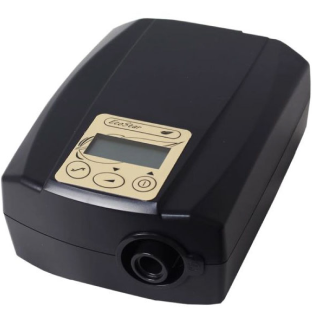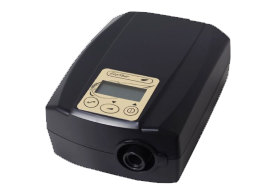PAP Device (Positive Airway Pressure)
A PAP (Positive Airway Pressure) device is a medical device used to treat sleep apnea and related breathing disorders. It delivers a gentle flow of pressurized air through a mask to keep your airway open during sleep.
Types of PAP Devices:
- CPAP (Continuous Positive Airway Pressure): These devices maintain a constant air pressure level throughout sleep, ensuring the airway remains open. They are effective for obstructive sleep apnea.
- BiPAP (Bilevel Positive Airway Pressure): BiPAP devices offer two pressure levels: higher during inhalation and lower during exhalation. They are useful for complex sleep apnea cases or individuals requiring varying pressure levels. These are also useful in COPD, Respiratory tract infection and Respiratory failure etc.
Benefits of Using a PAP Device:
- Enhanced Sleep Quality: PAP therapy promotes restorative sleep, reducing nighttime awakenings and enhancing overall sleep duration.
- Mitigated Daytime Fatigue: By preventing sleep disruptions, users experience reduced daytime sleepiness and increased alertness.
- Health Risk Reduction: Effective PAP therapy helps lower the risk of cardiovascular problems, hypertension, and other health complications linked to untreated sleep apnea.
Selecting the Right PAP Device:
The appropriate PAP device is determined by factors such as the severity of sleep apnea, individual preferences, and any concurrent health conditions. Sleep study results and medical guidance aid in making an informed choice.
Adapting to PAP Therapy:
Transitioning to PAP therapy might require time as individuals adjust to mask wear and air pressure sensations. Consistent use and open communication with healthcare providers contribute to a smoother adaptation process.
Maintenance and Hygiene of PAP device:
Regular maintenance is essential to ensure the longevity and efficacy of PAP equipment. Cleaning the mask, tubing, and humidifier (if applicable) following manufacturer instructions prevents bacterial growth.
Innovation and User-Friendly Features of PAP Devices:
PAP devices now offer heated humidification, data tracking, quiet operation, auto-adjusting pressure, enhanced mask fit, travel convenience, leak detection, smart start/stop, ramp features, and compatibility with glasses.
Side Effects of Using a PAP Device:
Using a PAP (Positive Airway Pressure) device may cause manageable side effects that tend to diminish as your body adjusts to the therapy. Common side effects include:
- Dry Nose or Mouth: The pressurized air may cause dryness in your nose or mouth, causing discomfort.
- Nasal Congestion: The air pressure can result in temporary nasal congestion, making nasal breathing a bit challenging.
- Skin Irritation from the Mask: Wearing the mask might cause skin irritation or redness, especially if the fit is not optimal.
- Initial Discomfort Falling Asleep: Initially, adjusting to sleeping with the mask might lead to difficulty falling asleep.
These side effects can often be managed with adjustments and support from your healthcare provider or equipment supplier.
Children and PAP Devices:
- Benefit for Children with Sleep Apnea: Children can benefit from PAP therapy, aided by specially designed pediatric masks and devices, leading to improved sleep quality and overall health.
- Specialized Masks and Devices: Pediatric PAP devices have smaller masks for comfortable fit and calibrated pressure levels suitable for children's needs.
- Consultation with Professionals: Consulting pediatric sleep specialists before starting PAP therapy is essential for proper diagnosis, gradual introduction, and ongoing monitoring.
- Improved Quality of Life: PAP therapy enhances children's sleep quality, cognitive development, and overall well-being, with healthcare professionals ensuring effective care.
Incorporating PAP Therapy into Lifestyle:
- Consistent Routine: Adhering to a regular sleep schedule helps align PAP therapy with your body's natural sleep-wake cycle, enhancing its effectiveness.
- Comfortable Environment: Creating a comfortable sleep environment with a cool, dark room and comfortable bedding can facilitate better sleep while using the PAP device.
- Device Adherence: Using the PAP device consistently as recommended by your healthcare provider ensures continuous therapy, leading to improved sleep quality and health outcomes.



